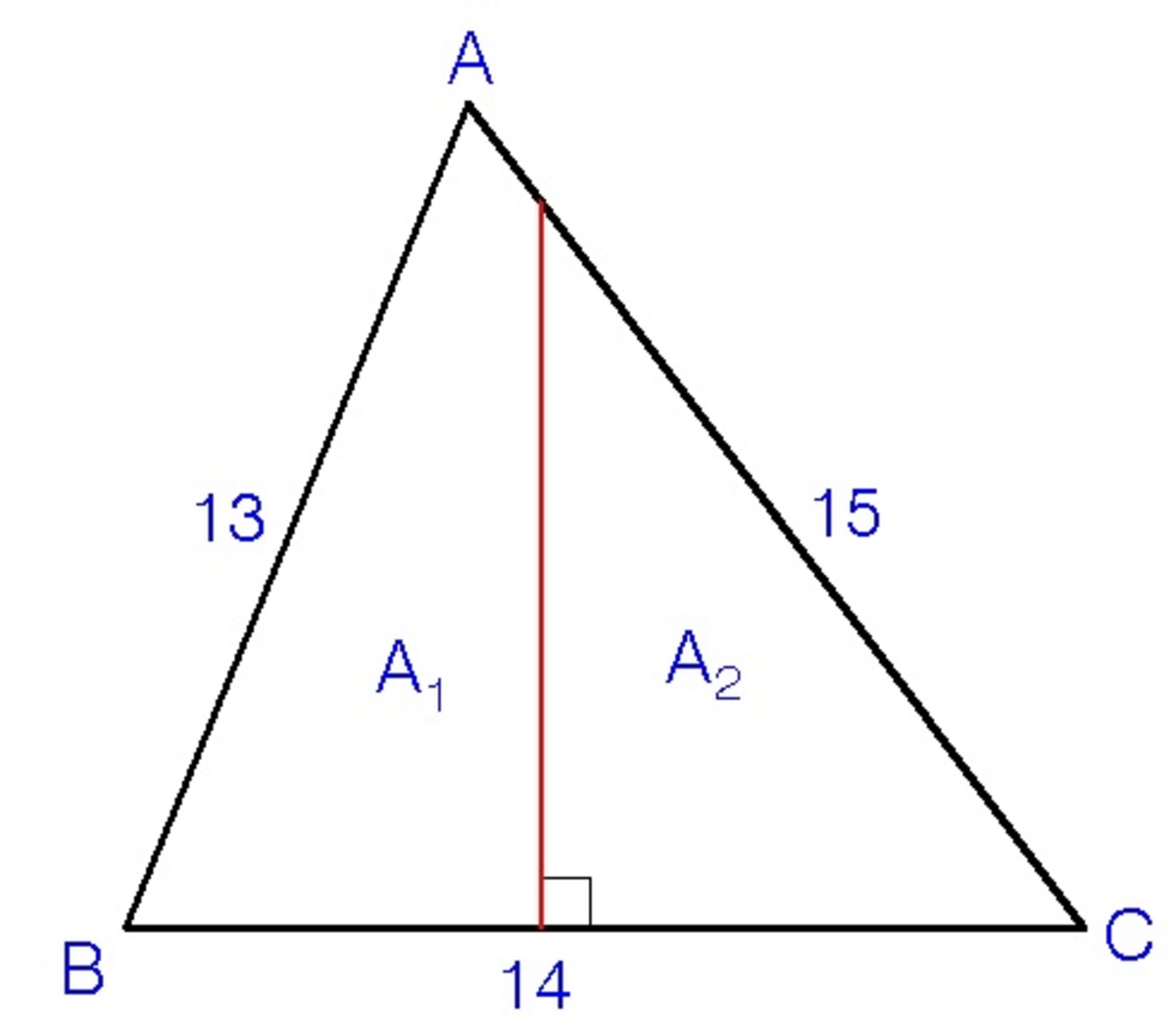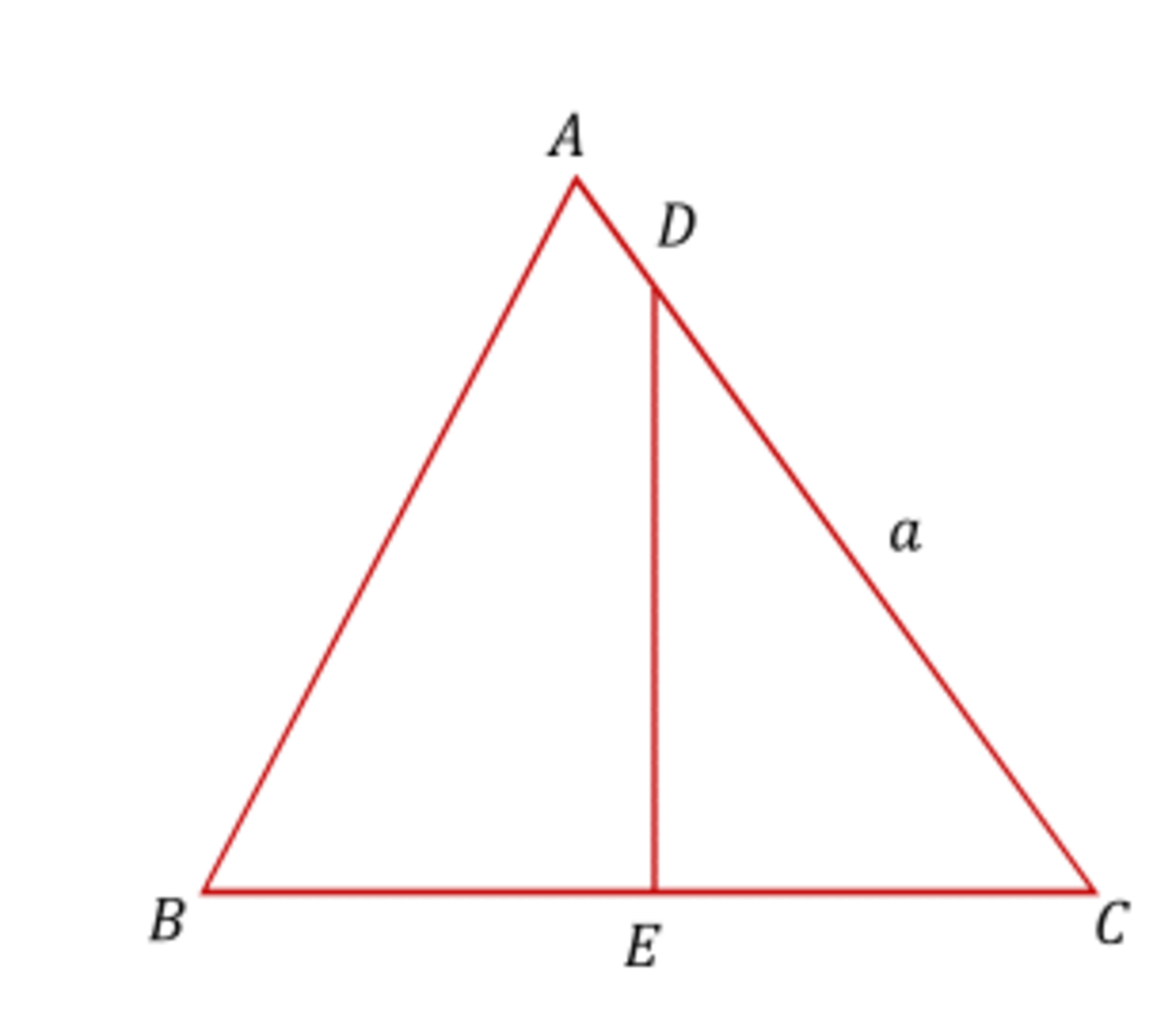Length of the dividing line
 The triangle above is divided into
2
equal areas by a perpendicular line as shown. What is the length of the dividing line? If your answer is of the form
x
y
, where
x
and
y
are integers with
y
square-free, give your answer as
y
.
The triangle above is divided into
2
equal areas by a perpendicular line as shown. What is the length of the dividing line? If your answer is of the form
x
y
, where
x
and
y
are integers with
y
square-free, give your answer as
y
.
Clarifications:
A 1 means A r e a 1
A 2 means A r e a 2
The answer is 7.
This section requires Javascript.
You are seeing this because something didn't load right. We suggest you, (a) try
refreshing the page, (b) enabling javascript if it is disabled on your browser and,
finally, (c)
loading the
non-javascript version of this page
. We're sorry about the hassle.
2 solutions
 Area of the
△
A
B
C
=
2
1
(
2
1
−
1
3
)
(
2
1
−
1
4
)
(
2
1
−
1
5
)
=
8
4
, so
A
2
=
2
8
4
=
4
2
Area of the
△
A
B
C
=
2
1
(
2
1
−
1
3
)
(
2
1
−
1
4
)
(
2
1
−
1
5
)
=
8
4
, so
A
2
=
2
8
4
=
4
2
cos C = 2 × 1 4 × 1 5 1 4 2 + 1 5 2 − 1 3 2 = 5 3 , sin C = 5 4
If C D = a then A 2 = [ D C E ] = 2 1 a cos C a sin C = 2 1 × 5 3 × 5 4 × a 2
a 2 = 4 2 × 3 × 4 2 × 2 5 = 1 7 5 , a = 5 7
D E = a sin C = 5 7 × 5 4 = 4 7
Answer = 7
Since F E ∥ A D , △ F E C ∼ △ A D C , and E C F E = D C A D = 3 4
It follows that E C = 4 3 F E .
Now the area of △ A B C = 2 1 ( 1 4 ) ( 1 2 ) = 8 4 . The area of △ F E C is 2 1 ( 8 4 ) = 4 2 .
Therefore, the area of right △ F E C = 2 1 ( E C ) ( F E ) = 4 2 . Substituting we get
4 2 = 2 1 ( F E ) ( 4 3 ) ( F E ) ⟹ F E = 4 7
Finally,
y = 7